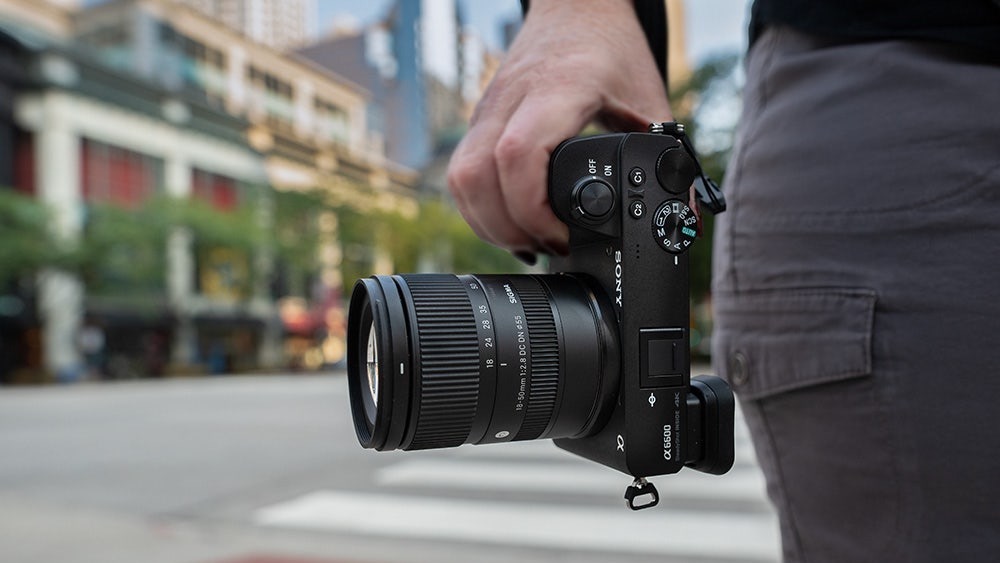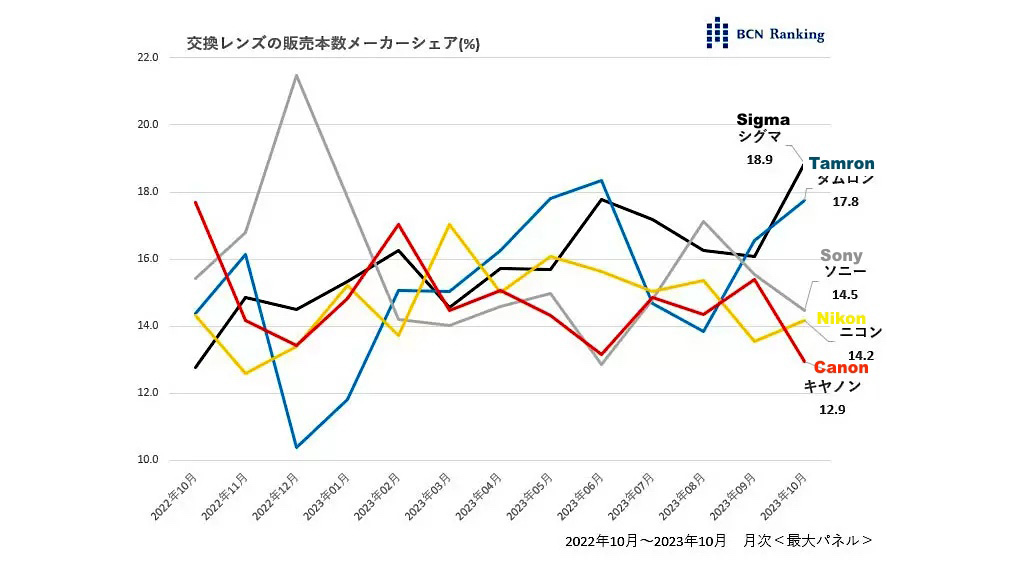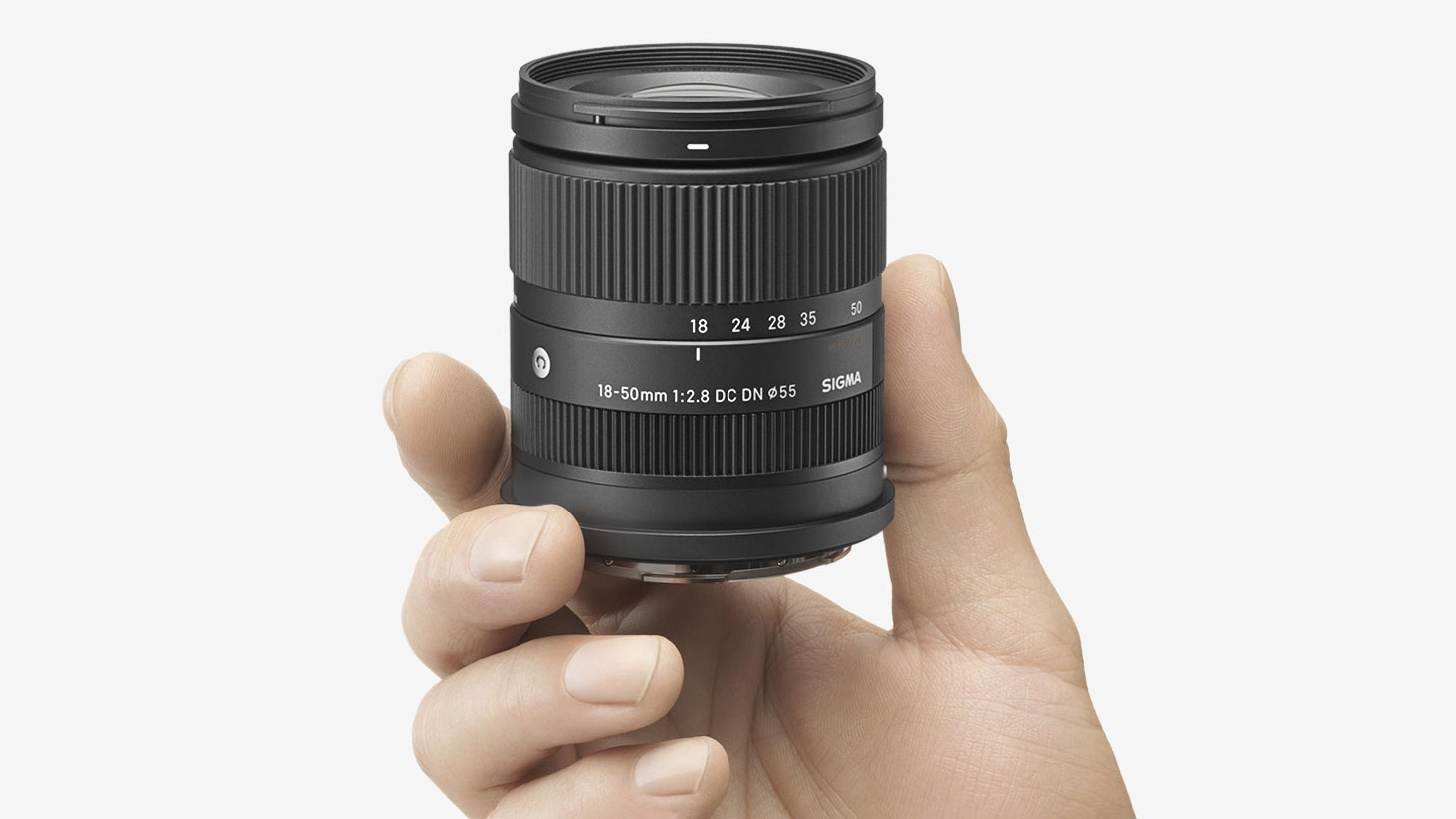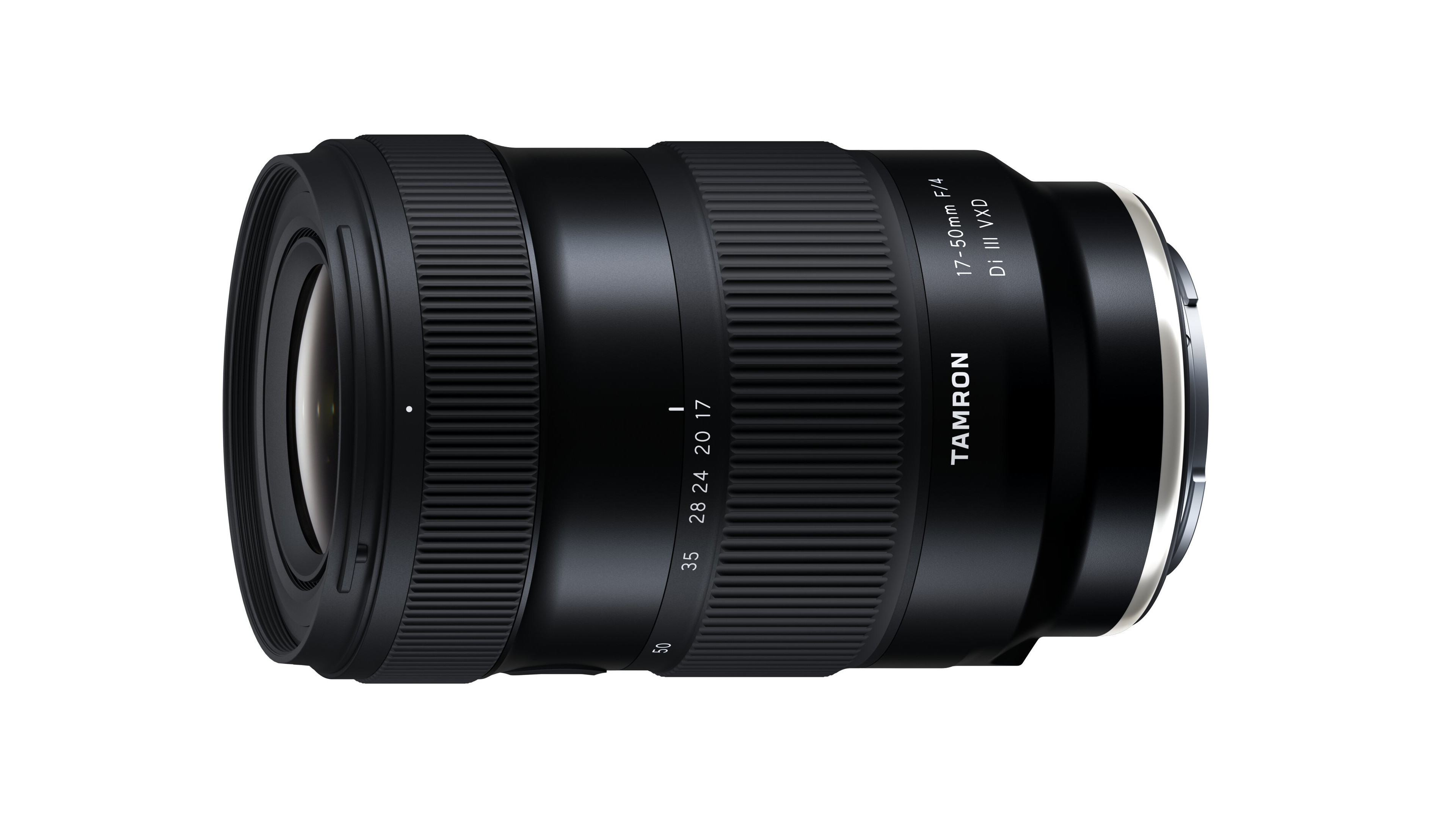
Interchangeable lenses are on the rise, but the market leaders may surprise you.
Recent data collected by BCN Retail provides a detailed insight into the lens market in Japan, with third-party lens manufacturers Sigma and Tamron beating out the competition of native camera brands Canon, Nikon, and Sony. Third-party lens manufacturers offer lenses that cover the mounts of the top camera brands, usually at a lower price point. The lower price used to mean a sacrifice in quality, but with today's technology, the third-party and native lenses are indistinguishable, often featuring in our best camera lens guides.

The data collected by BCN show third-party manufacturers now account for 30%-40% of all interchangeable lenses sold and, this is only growing. This is most likely due to covering a wider range of cameras than the native manufacturers, but also because the lenses themselves have improved.
The top 5 lens manufacturers are as follows:
Sigma: 18.9%
Tamron: 17.8%
Sony: 14.5%
Nikon: 14.2%
Canon: 12.9%

Sigma tops the market and as it continues to develop its lens lineup and fill the gaps in its mirrorless ranges, I expect this will grow further. Sigma's most-sold lens last month (October 2024) was the Sigma 18-50mm F2.8 DC DN | C, APS-C lens available for Sony E, Leica L, and Fujifilm X mount. Its small form factor, high aperture, and new release for X mount have no doubt contributed to its success. Sigma has more lenses set for release for full frame with the hotly-anticipated Sigma 70-200mm f/2.8 DG DN OS|Sports set for release next month.

Sigma's success at the number one spot is closely contested by Tamron, the other third-party manufacturer on the list. Tamron has also been pushing boundaries in lens technology, just last month introducing a 'world-first' Tamron lens for Sony E-mount users with the Tamron 17-50mm f/4 Di III VXD ultra-wide to standard zoom lens. Tamron has also been updating lens firmware, future-proofing existing lenses, and keeping customers happy, and I'm sure in turn loyal.
On the other end of the data collected sits Canon. This is interesting as Canon has been very reluctant to allow third-party manufacturers to develop lenses for its RF mount, whereas Sony and Nikon both have open third-party participation. Canon has said that it will work selectively with third-party manufacturers on a lens-by-lens basis, most recently the Voigtländer Nokton 50mm f/1 Aspherical, so we may see this increase next year. It's hard to tell whether opening up the RF mount to Sigma and Tamron would help or hinder Canon's position.
See our guides for more information on the best Sony lenses, the best Canon RF lenses, the best Nikon Z lenses, and the best Fujifilm lenses.







